Jeff Briscoe will launch an appeal against the decision to remove the Crowther statue
A former councillor will launch an appeal against the decision to grant a permit to take down the controversial statue of William Crowther. Latest.
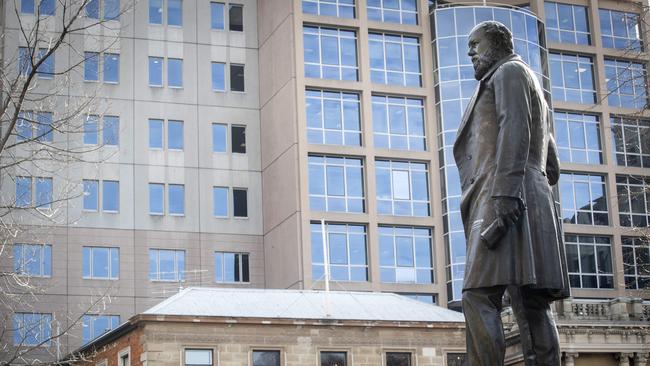
Tasmania
Don't miss out on the headlines from Tasmania. Followed categories will be added to My News.
A former Hobart City alderman will appeal the council’s decision to grant a permit to remove the statue of William Crowther, and he says he’s not the only one who plans to challenge the ruling.
On Wednesday the Hobart City Council’s planning committee voted 8-2 to grant the permit, a decision which followed an initial vote in 2022 for the statue to come down.
There have been calls to remove the statue because Crowther is known for decapitating the remains of Aboriginal man William Lanne, stealing his skull and sending it to the Royal College of Surgeons in London.
Jeff Briscoe, who was first elected to the council in 1994 but not re-elected in last year’s local government poll, said he was “appalled” by the council’s decision to grant the permit.
“It was predictable but I was still appalled at the decision,” Mr Briscoe said.
“We know there’s a lot of doubt about whether he took the skull. New research suggests there’s doubt that he’s guilty.
“There’s heaps of articles at the time about how respected he was.”
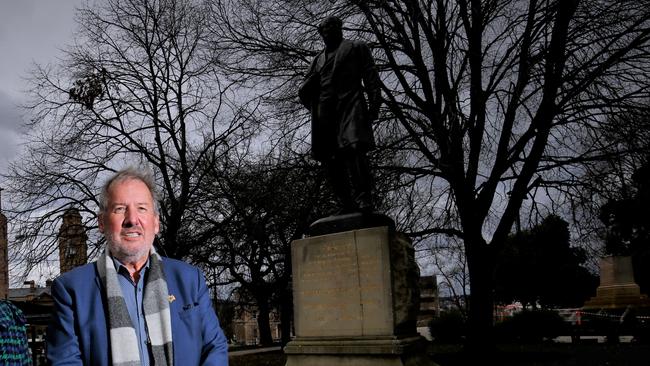
Mr Briscoe said he and other were preparing to appeal the decision.
“I’ll lodge the appeal but there will be other parties joining my appeal. I know at least three others will join the one appeal,” he said.
“I’m confident it’s worth having a good go. Appeals are very expensive, it can be expensive if it goes to the full hearing, but because I believe in this, it’s worth appealing.”
Anne Blyth Burleigh is distantly related to Crowther, through the marriage of her great great grandfather.
“His only sister, Elizabeth, married my great great grandfather’s brother,” Ms Burleigh said.
“I was born here, my mother and grandmother were born here, they used to take us down to see the statue.
“It’s quite personal, it’s part of our family history, there’s not many places you can go to and say that I had a connection to that person.”
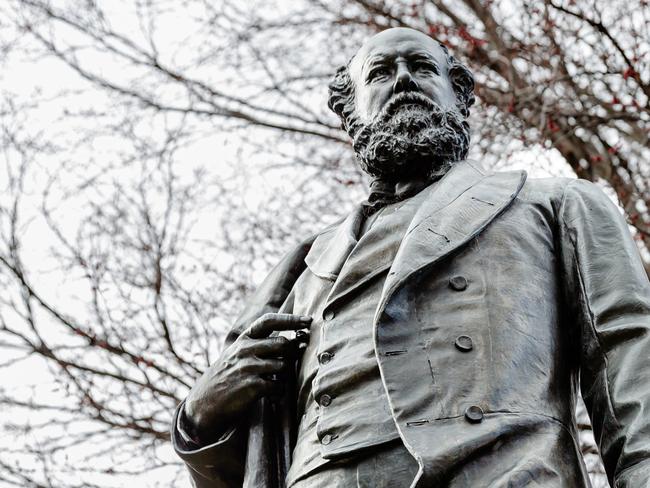
Ms Burleigh said she was disappointed in the decision to take down the statue and was considering an appeal.
“My mother would have been fighting for this, but it’s me on my own, I’m 73.”
“The statue itself is a piece of artwork, the public paid for it.”
Mr Briscoe said he was confident the ruling had a chance to be overturned, based on planning considerations.
“An appeal is looking at the evidence, law and planning scheme,” he said.
“I have great faith in the planning system. This was a political decision, not of consideration of the planning scheme.”
Historian says Crowther statue should reflect Tasmania’s ‘dark past’
August 25, 12:30pm
A well-known historian says the truth of Tasmania’s dark history needs to be told, regardless of whether the statue of William Crowther is taken down or stays where it is.
Prof. Cassandra Pybus said she wasn’t surprised by the decision on Wednesday to grant a permit to remove the colonial monument, but she has a complicated opinion on whether it was the right decision.
“I am not somebody who believes the statue should not be taken down, I believe it should be properly interpreted whether it stands or is taken down,” Prof. Pybus said.
“My concern is the truth of the history is much more complicated and involves many more people.”
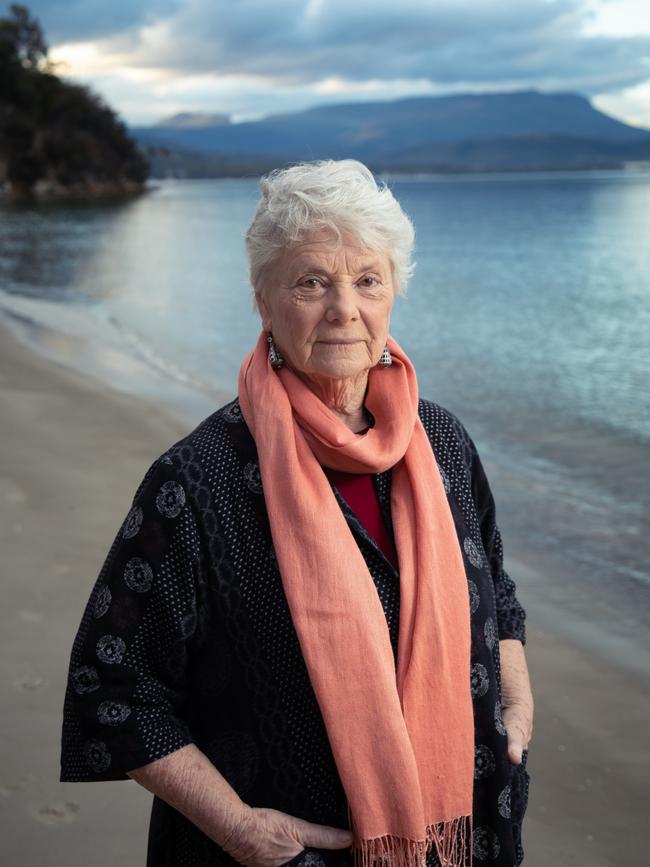
Prof. Pybus said she believed the possibility of leaving it where it was could create the opportunity for truth telling.
“I thought it should be left there to be properly interpreted in the light of the history of stealing Aboriginal remains in Tasmania,” she said.
[Many Tasmanians] don’t know, it was hidden, it was deliberately kept quiet.
“Whatever happens to that site, it needs to be a site of interpretation of a very dark past.”
Prof. Pybus said as it was the statue did not paint a full picture of Tasmania’s dark past.
“As it was, it was a commemoration of William Crowther, which was offensive to Aboriginal people,” she said.
“I don’t believe he needs to be commemorated either but the truth needs to be told”
“I understand the symbolic importance of that statue to members of the Tasmanian Aboriginal community, I wouldn’t argue against that.”
The council will install temporary signage to accompany the empty plinth, to tell the story of Crowther and reflect the council’s process to this point.
In the long term, a permanent piece will be installed, which has not yet been decided on.
“I would hope they would do it in consultation with Aboriginal artists as they did with the first response to the statue,” Prof. Pybus said.
Crowther decision could be challenged
August 24, 7pm
The Hobart City Council will now look at possible permanent homes for the statue of William Crowther, but before it can actually take down the statue, the decision paving the way for removal could be challenged.
The council’s planning committee voted 8-2 on Wednesday to grant a permit to remove the statue, a decision which has followed lengthy consultation and approvals processes.
Hobart Lord mayor Anna Reynolds said it was a significant move by the council in acknowledging Tasmania’s dark history.
Crowther was known for decapitating the remains of Aboriginal man William Lanne, stealing his skull and sending it to the Royal College of Surgeons in London.
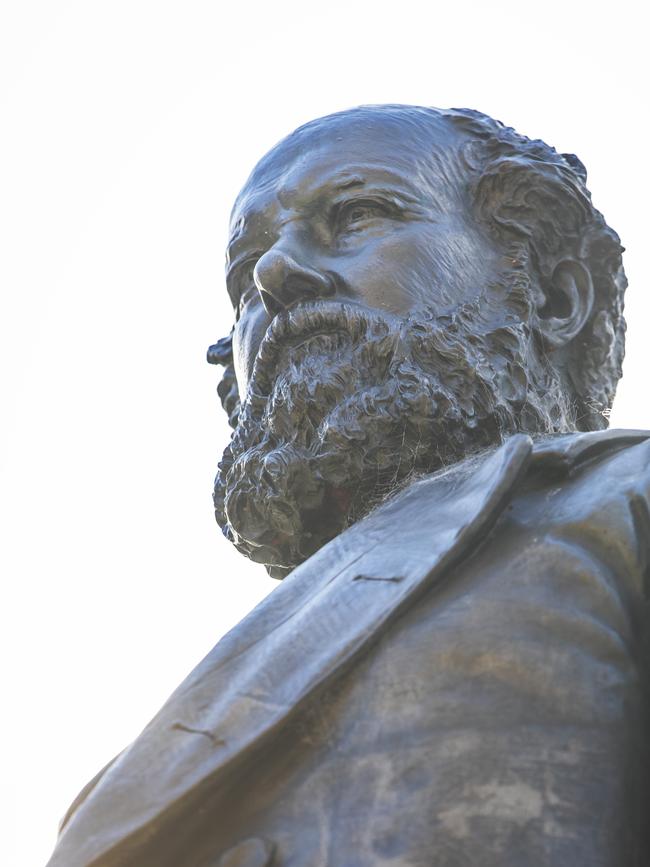
“That was a period when many of the gentleman in Hobart were going around trying to procure skulls and bones and skeletons of Australian Aboriginal people, basically because they wanted to prove they were of lower intelligence than caucasians and would ultimately die out,” Ms Reynolds said.
“That is the truth of that history, and that is what Crowther was involved in, he wasn’t the only person involved in it.
“But this whole process is an act of reconciliation and has led to a lot discussion and awareness raising of that period of our history.”
Before the council can make good on its decision, it could face a challenge from one of the 35 parties which made submissions about the council’s development application.
There were 23 people who made representations opposed to the removal.
“Under Tasmanian planning law, if you made a representation to the planning permit application, you have the right to appeal it,” Hobart Lord mayor Anna Reynolds said.
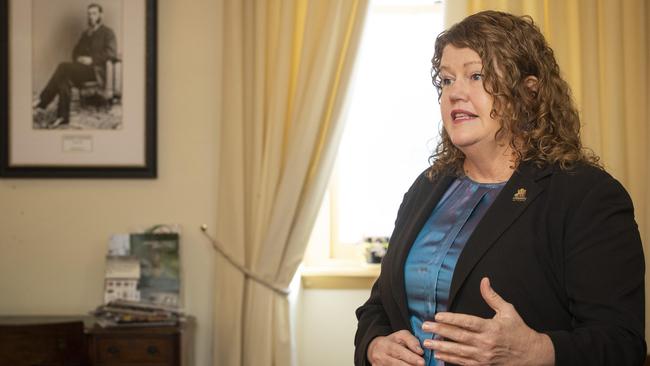
“The appeal does need to be grounded in a dispute about planning law.”
The council will begin investigating where the statue could be permanently kept.
“Now that we’ve got this decision we will start talking to other collecting institutions, the museum, the library, maybe the parliament and see if there is an interest in the display of the statue in another location with another interpretation,” Ms Reynolds said.
“At the very least the statue will be conserved and cared for and if there isn’t another taker for the statue, we will care for it here at the City of Hobart.”
The Council is also yet to decide on a permanent installation to accompany what will be an empty sandstone plinth.
“We will involve the Tasmanian Aboriginal community and we’ll also be interested in the views of the entire community of Hobart,” she said.
Ms Reynolds it was an important story Hobart was telling by choosing to remove the statue, but she said it didn’t set a precedent to determine the future of other monuments.
“It doesn’t set any precedent in planning law, our planners made it very clear every time we decide to change something of historic value, we will need to consider all of the expert advice we have considered as part of this process,” Ms Reynolds said.
“It’s not something that just happens overnight and without great consideration, it is something we’ve put thought into and in that sense, any other projects other councils might undertake will have to go through a similar process.”
The Council is in the early stages of developing a monuments policy, which would need to be endorsed by elected members.
DECISION: Crowther statue’s days numbered
August 23, 7:07pm
The controversial statue of William Crowther has received the final approval to be taken down by the council and put into storage, after the decision was cemented by a Hobart City Council planning committee vote on Wednesday.
There have long been calls for the statue to be removed because the deceased former premier is known for decapitating the remains of Aboriginal man William Lanne, stealing his skull and sending it to the Royal College of Surgeons in London.
It’s been more than a year since the Hobart City Council voted for the statue to be removed, a verdict which followed a year long consultation project.
Even though it received the tick off from the council, the removal still needed the green light from the Tasmanian Heritage Council, which it received last week and a permit from the Hobart City planning committee, which it has now secured.
The second council vote was required to allow the matter to be assessed on planning merits.
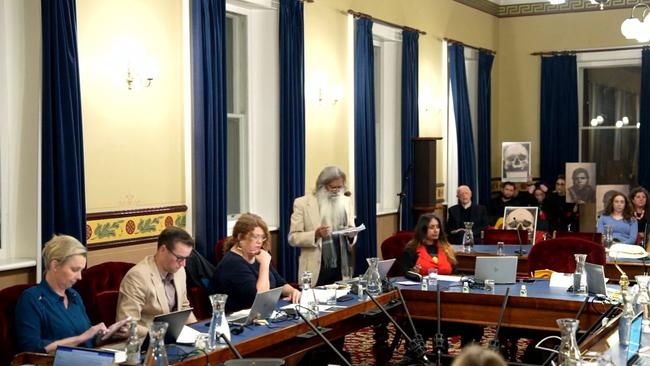
Cr Ben Lohberger supported the removal of the statue.
“Crowther’s desecration of William Lanne’s body was one of the most hurtful and despicable acts of them all, we as a council are trying to acknowledge that through this process,” Mr Lohberger said.
“We cannot continue ignoring history, that is exactly what this process is about, accurately reflecting what happened to William Lanne, the man who is being forgotten in all of this.”
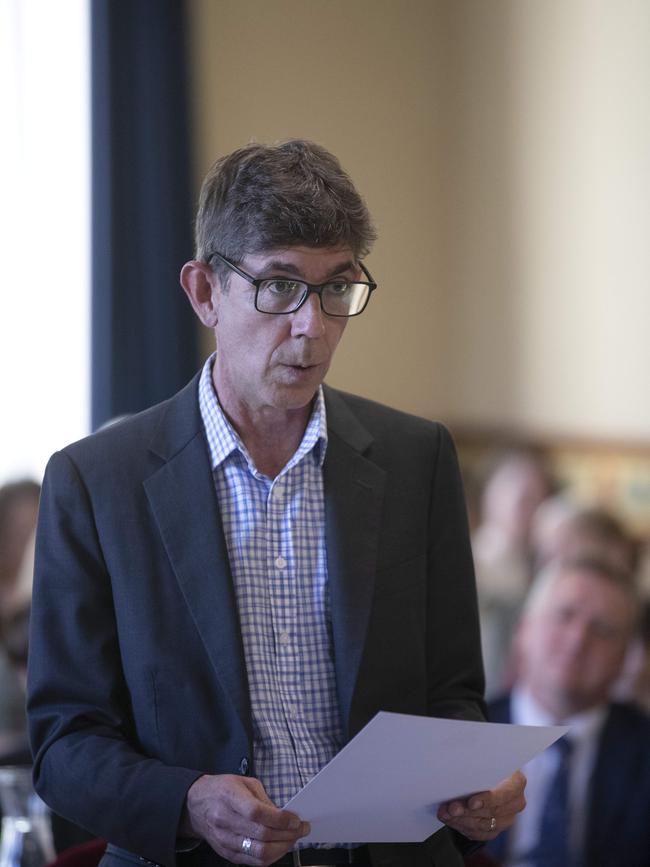
Mr Lohberger criticised some of the discourse throughout the debate.
“There have been many things said outside this room about the statue, many of those things have been unfair or incorrect, while many others can only be described as racist,” Mr Lohberger said.
“It has been a very telling debate and I do think some of the statue supporters have done themselves and our city no favours through the language they have chosen to use.”
Cr Louise Elliot, who was present for the debate but not the vote, asked where the statue would be kept.
“Those details have not been finalised by the applicant team … the current proposal for the conditions would be the oversight body would be the THC (Tasmania Heritage Council),” a council director said.
Ms Elliot said she did not understand why the plinth would be remain.
“What the application actually puts forward is nonsensical, if the Crowther statue is so offensive to members of the community, I really don’t understand why the sandstone plinth would remain,” Ms Elliot said.
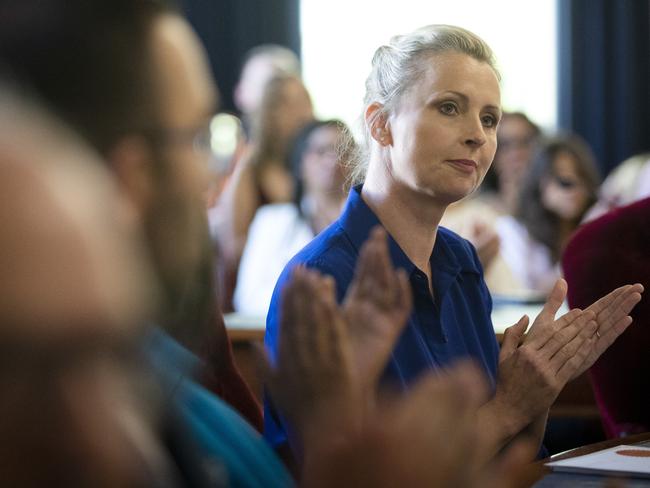
“To me, the only explanation is without the plinth being there, there’s nothing to draw attention to the statue’s removal and it’s more powerful for the plinth to remain so it can be showcased as a virtuous, headline grabbing, empty plinth.”
Ms Elliot did not support the sign proposed to accompanied the plinth.
“It’s like we want Franklin Square to look like a construction zone,” she said.
“I also find the signage to be highly inappropriate and a detractor to such a heritage location.”
Ald Louise Bloomfield moved an amendment that the temporary signage not be installed, but it was defeated.
“If we’re removing this, I think we as a community would be better to simply move on
rather than establish temporary signage,” Ms Bloomfield said.
“It’s not going to fit in with the area.”
Cr Ryan Posselt said cultural significance was a changing thing.
“Some councillor have referenced the statue has been there forever, it’s been there for 135 years,” Ms Posselt said.
“The only constant in Hobart nipaluna is kunanyi and the River Derwent, everything else changes.
“The statue has not stood there forever, the statue has stood there for a recent colonial past.
“It is merely as blip in the history of this place.”
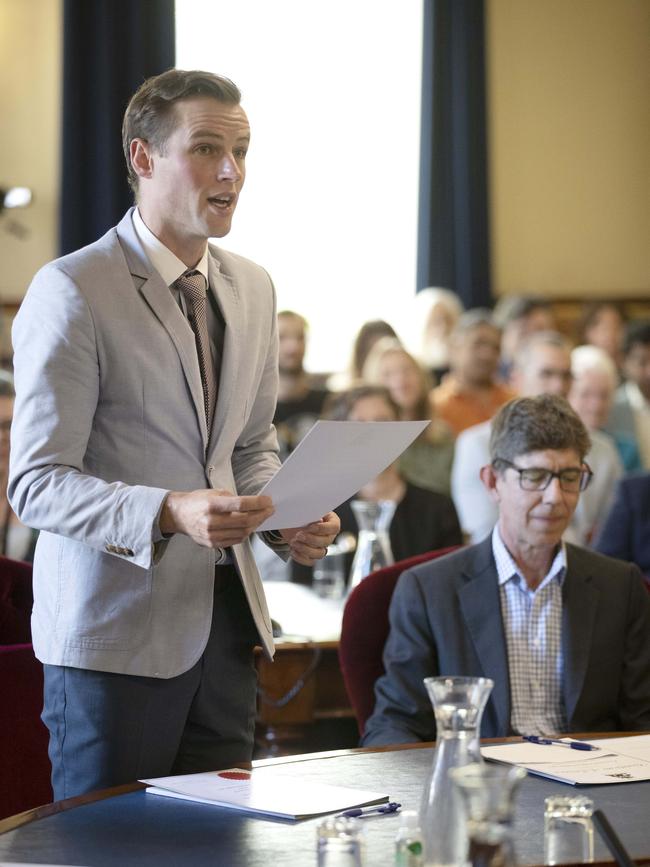
Cr Mike Dutta also supported the removal of the statue.
“Structures are built, structures are destroyed,” Mr Dutta said.
“I just came back from Fiji and there were some very important buildings there I valued when I grew up.
those structures are destroyed, but they don’t destroy the memories I have of the place
“The good deeds and the bad deeds are the ones we live with and it will never be gone.”
Before the debate, the committee heard deputations from a members of the public and planning experts.
During her deputation, Purcell architect Lucy Burke-Smith, who was involved in preparing the council’s development application, was asked about the possibility of the removal setting a precedent.
Ms Burke-Smith said the Crowther monument was not of significance, unlike the statue of John Franklin.
“Franklin has a much more intrinsic association with Franklin Square,” Ms Burke-Smith said.
“By association, Franklin himself and the fountain and the bronze of the park contributes directly to the significance of the place.”
The permit was granted, with eight elected members voting in favour and two voting against.
What happens to the statue now?
• The bronze part of the statue will be removed, but the plinth will remain.
• The Tasmanian Heritage Council will decide on a permanent home for the statue
• The council will install temporary signage to accompany the plinth, which will be in place until a permanent replacement sign is approved.
• Those who made representations have 14 days to lodge an appeal.
Reaction from Tasmanian Aboriginal Centre
The Hobart Aboriginal community are “overjoyed” by the decision finalising the removal of the statue of disgraced former Premier William Crowther, with some hoping it will lead to discussion around other colonial monuments.
Tasmanian Aboriginal Centre campaign manager Nala Mansell said it had been a long process, but the group were happy with the outcome.
“We’re really glad to hear once again the majority of the Hobart City Council are showing leadership on this issue and have voted in favour of the removal,” Ms Mansell said.
“To remove the statue, glorifying someone who did such evil deeds to our old people, is just something where common sense should prevail,
“We are overjoyed and offer our congratulations to the Hobart City Council for acknowledging the truth,”
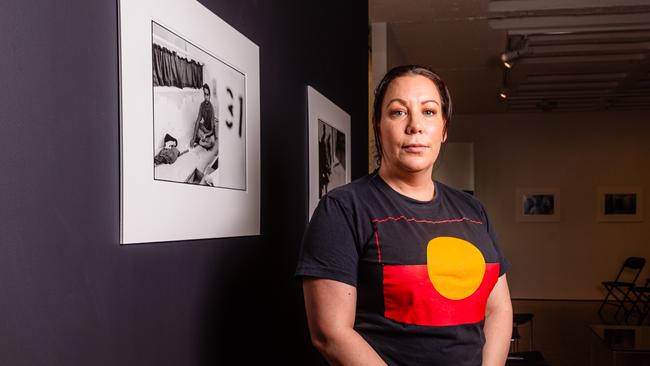
Ms Mansell said she hoped the decision would be accepted and go without appeal.
“20 year ago, the Aboriginal community were calling for the removal of the statue, we’re a bit sick of all the hurdles the process has had to go through,” she said.
“We’re just hoping the removal will happen soon.”
There was talk during the meeting about whether the removal of the statue would set a precedent, something planning officers said would not be the case.
“It’s disappointing to hear that it’s not setting a precedent,” Ms Mansell said.
“It’s now a great opportunity for councils across the state to look at the statues celebrated and decide whether they are relevant in today’s society and whether they should be removed.
“The Hobart City Council mentioned a monuments policy, it’s hoped that policy would engage someone to look at the actions of each person and discuss whether they deserve to be celebrated.”
How elected members voted
In favour of issuing a permit:
– Zelinda Sherlock
– Ryan Posselt
– Ben Lohberger
– Louise Bloomfield
– Mike Dutta
– Bill Harvey
– Helen Burnet
– Anna Reynolds
Opposed to issuing a permit:
– Simon Behrakis
– John Kelly
Absent
– Marti Zucco
– Louise Elliot (present during debate, absent for vote)
More Coverage
Originally published as Jeff Briscoe will launch an appeal against the decision to remove the Crowther statue





